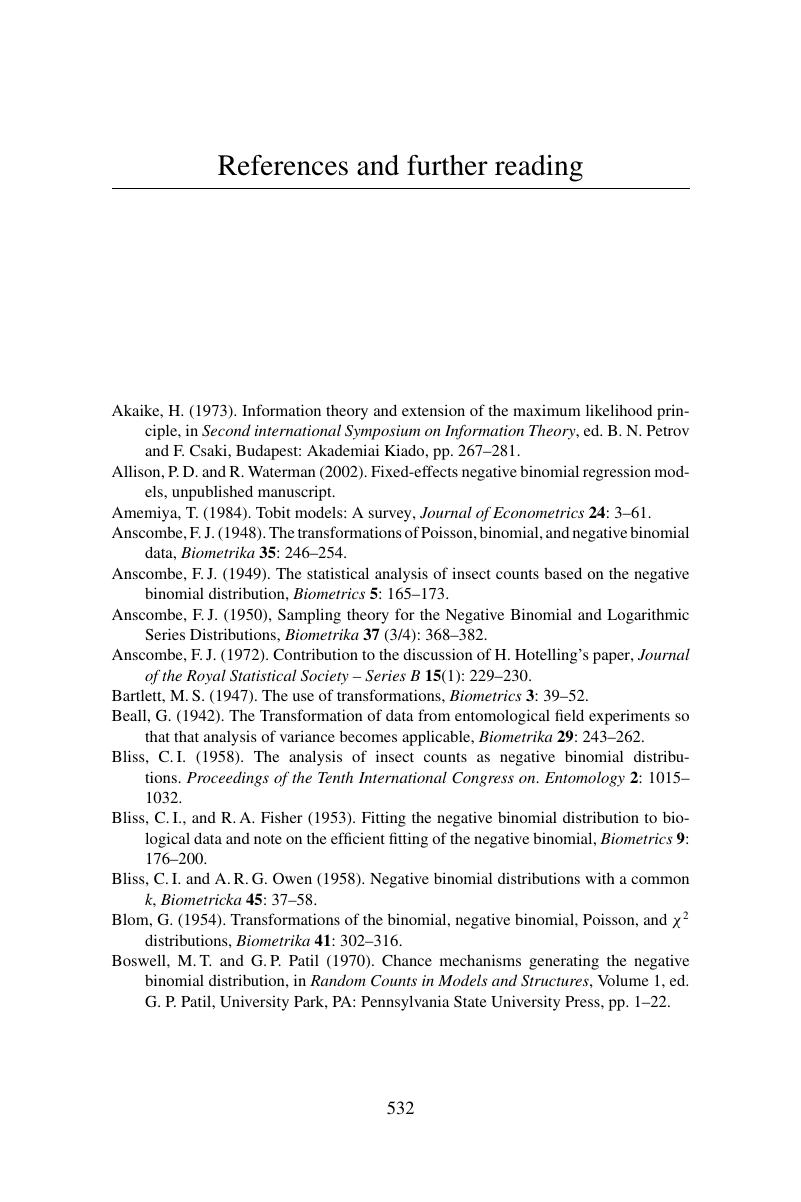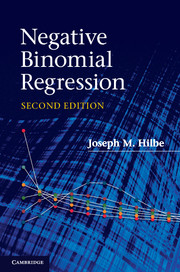Book contents
- Frontmatter
- Contents
- Preface to the second edition
- 1 Introduction
- 2 The concept of risk
- 3 Overview of count response models
- 4 Methods of estimation
- 5 Assessment of count models
- 6 Poisson regression
- 7 Overdispersion
- 8 Negative binomial regression
- 9 Negative binomial regression: modeling
- 10 Alternative variance parameterizations
- 11 Problems with zero counts
- 12 Censored and truncated count models
- 13 Handling endogeneity and latent class models
- 14 Count panel models
- 15 Bayesian negative binomial models
- Appendix A Constructing and interpreting interaction terms
- Appendix B Data sets, commands, functions
- References and further reading
- Index
- References
References and further reading
Published online by Cambridge University Press: 05 June 2012
- Frontmatter
- Contents
- Preface to the second edition
- 1 Introduction
- 2 The concept of risk
- 3 Overview of count response models
- 4 Methods of estimation
- 5 Assessment of count models
- 6 Poisson regression
- 7 Overdispersion
- 8 Negative binomial regression
- 9 Negative binomial regression: modeling
- 10 Alternative variance parameterizations
- 11 Problems with zero counts
- 12 Censored and truncated count models
- 13 Handling endogeneity and latent class models
- 14 Count panel models
- 15 Bayesian negative binomial models
- Appendix A Constructing and interpreting interaction terms
- Appendix B Data sets, commands, functions
- References and further reading
- Index
- References
Summary

- Type
- Chapter
- Information
- Negative Binomial Regression , pp. 532 - 540Publisher: Cambridge University PressPrint publication year: 2011



